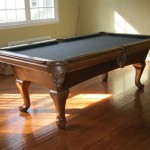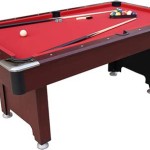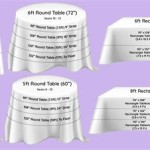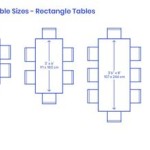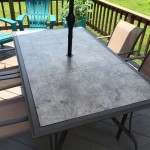The Indispensable Center Table for the Living Room: Functionality and Aesthetics
The center table, often positioned at the heart of the living room, plays a pivotal role in defining both the functionality and the aesthetic appeal of the space. More than just a surface, it serves as a focal point, a gathering place, and a practical element tailored to the daily needs of its occupants. This article explores the diverse aspects of the center table, encompassing design considerations, functional benefits, material choices, and its overall impact on the living room environment.
Defining Functionality: Beyond a Simple Surface
The primary function of a center table extends far beyond simply providing a surface to rest drinks or magazines. It is a versatile element that contributes significantly to the usability of the living room. Consider the diverse activities that typically occur in this space – from casual conversations and family gatherings to quiet evenings with a book or movie. The center table facilitates these activities by offering a convenient platform for various items.
For example, during social gatherings, the center table becomes the central hub for appetizers, drinks, and conversation pieces. Its surface allows for easy access to refreshments and provides a natural gathering point for guests. Similarly, during movie nights, it serves as a convenient place to keep remote controls, snacks, and beverages, enhancing the viewing experience. The size and design of the table should align with the typical activities it will support.
Furthermore, the center table can function as a storage solution, particularly in smaller living spaces. Tables with built-in drawers, shelves, or compartments provide valuable storage space for items like books, magazines, remote controls, and other living room essentials. This helps to declutter the space and maintain a more organized and aesthetically pleasing environment. The choice between open shelving and closed storage depends on personal preference and the specific items that need to be stored.
Beyond storage, a center table can also serve as a display area for decorative items. Vases, sculptures, coffee table books, and other personal touches can be strategically placed to add personality and visual interest to the living room. The table’s surface provides a blank canvas for creating a curated display that reflects the homeowner's style and interests. The key is to maintain a balance between decorative elements and functional space, ensuring that the table remains practical and uncluttered.
The height of the center table is another crucial factor to consider. It should ideally be at or slightly below the height of the sofa cushions. This ensures that items on the table are easily accessible from a seated position. A table that is too high can feel awkward and uncomfortable, while a table that is too low can make it difficult to reach items. Determining the appropriate height is essential for maximizing the table's functionality and comfort.
Exploring Design Considerations: Style, Shape, and Size
The design of a center table contributes significantly to the overall aesthetic of the living room. It is important to choose a table that complements the existing décor and reflects the homeowner's personal style. Design considerations encompass style, shape, size, and material, all of which play a crucial role in creating a cohesive and visually appealing space.
The style of the center table should align with the overall design theme of the living room. For a modern living room, a sleek and minimalist table with clean lines and geometric shapes would be a suitable choice. Materials like glass, metal, and polished wood are often used in modern designs. In contrast, a traditional living room might benefit from a more ornate table with carved details and a rich wood finish. Antique or vintage-inspired tables can also add character and charm to a traditional space.
The shape of the center table is another important consideration. Rectangular tables are a popular choice for larger living rooms, as they provide ample surface area and complement the shape of most sofas. Round or oval tables can be a better option for smaller spaces, as they take up less visual space and create a more intimate atmosphere. Square tables can also work well in smaller living rooms, particularly when paired with a sectional sofa. The shape of the table should be chosen to complement the layout of the room and the seating arrangement.
The size of the center table is crucial for ensuring that it is proportionate to the surrounding furniture. A table that is too large can overwhelm the space and make it feel cramped, while a table that is too small can look insignificant and fail to provide adequate surface area. As a general rule, the table should be approximately two-thirds the length of the sofa. The distance between the table and the sofa should also be considered, allowing enough space for comfortable movement around the table.
The material of the center table contributes significantly to its aesthetic appeal and durability. Wood is a classic choice that offers warmth and versatility. Different types of wood, such as oak, maple, and walnut, offer varying grain patterns and color tones, allowing for a wide range of design possibilities. Glass tables create a light and airy feel, making them a good option for smaller living rooms. Metal tables offer a modern and industrial aesthetic, while stone tables provide a more rustic and natural look. The choice of material should be based on personal preference, the overall design theme of the living room, and the desired level of durability.
Material Choices: Wood, Glass, Metal, and Beyond
The material used in the construction of a center table significantly influences its appearance, durability, and overall suitability for a given living room. The selection of materials extends beyond mere aesthetics, factoring in practical considerations such as maintenance, resistance to wear and tear, and the desired level of visual impact.
Wood remains a favored choice for its inherent warmth, versatility, and timeless appeal. Solid wood tables offer exceptional durability and can withstand years of use with proper care. Different wood species offer distinct grain patterns and color variations, allowing homeowners to select a wood that complements their existing decor. Oak, maple, cherry, and walnut are popular options, each offering unique visual characteristics.
Glass center tables impart a sense of airiness and modernity to a living room. The transparent nature of glass allows light to pass through, making the space feel larger and more open. Glass tables are particularly well-suited for smaller living rooms where maximizing visual space is crucial. Tempered glass is the preferred choice for center tables due to its enhanced strength and resistance to shattering.
Metal center tables offer a sleek and contemporary aesthetic, often associated with industrial or minimalist design styles. Metal frames provide excellent structural support and can be paired with various tabletop materials, such as wood, glass, or stone. Stainless steel, wrought iron, and brass are commonly used metals, each offering a unique visual appeal.
Stone center tables, such as those made from marble, granite, or slate, exude a sense of luxury and sophistication. Stone tables are exceptionally durable and resistant to scratches and stains. However, they can be quite heavy, requiring careful consideration of the floor's load-bearing capacity. Stone tabletops are often paired with metal or wood bases to create a visually appealing contrast.
Beyond these traditional materials, alternative options such as concrete, acrylic, and reclaimed wood offer unique textural and visual interest. Concrete center tables provide a raw and industrial aesthetic, while acrylic tables offer a modern and minimalist look. Reclaimed wood tables add character and charm, often showcasing the unique history and patina of the wood.
The choice of material should also consider the maintenance requirements. Wood tables require regular cleaning and polishing to maintain their luster, while glass tables require frequent wiping to remove fingerprints and smudges. Metal tables are generally low-maintenance, but some metals may be prone to rust or corrosion. Stone tables are relatively easy to clean, but some types of stone may be porous and require sealing to prevent staining.

Gymax 2 Tier 31 5 In Brown Square Wooden Coffee Table With Storage Industrial Center For Living Room Gym11086 The Home Depot

Free On Trimied Modern Coffee Table With Storage In Black Center Stainless Steel Base Homary Design Unique

Most Beautiful Wood Interior Center Tables Design Stylish Space Savings Coffee Fo Muebles De Apartamento Mesas Sala Modernas Centro

Wooden Brown And White Center Table For Living Room Home With Storage At Rs 11000 In Jaunpur

Polibi 45 2 In Contemporary White Rectangle Shape Wood Coffee Table For Living Room Center Sofa Rs W45brshs W The Home Depot

Whole High End Living Room Modern Center Table Wooden Frame Retangle Coffee Fable With Storage Drawer China Tables Made In Com

Coffee Tables Buy Table Upto 70 Off Pepperfry

Adolph Wood Bicca Coffee Table For Living Room Center Natural Brown Finish Shagun Arts

Modern Center Tables For Your Living Room Top 10 Choices

Zurich Center Table Betterhome Coffee Ahmedabad Living Room Furniture
Related Posts

